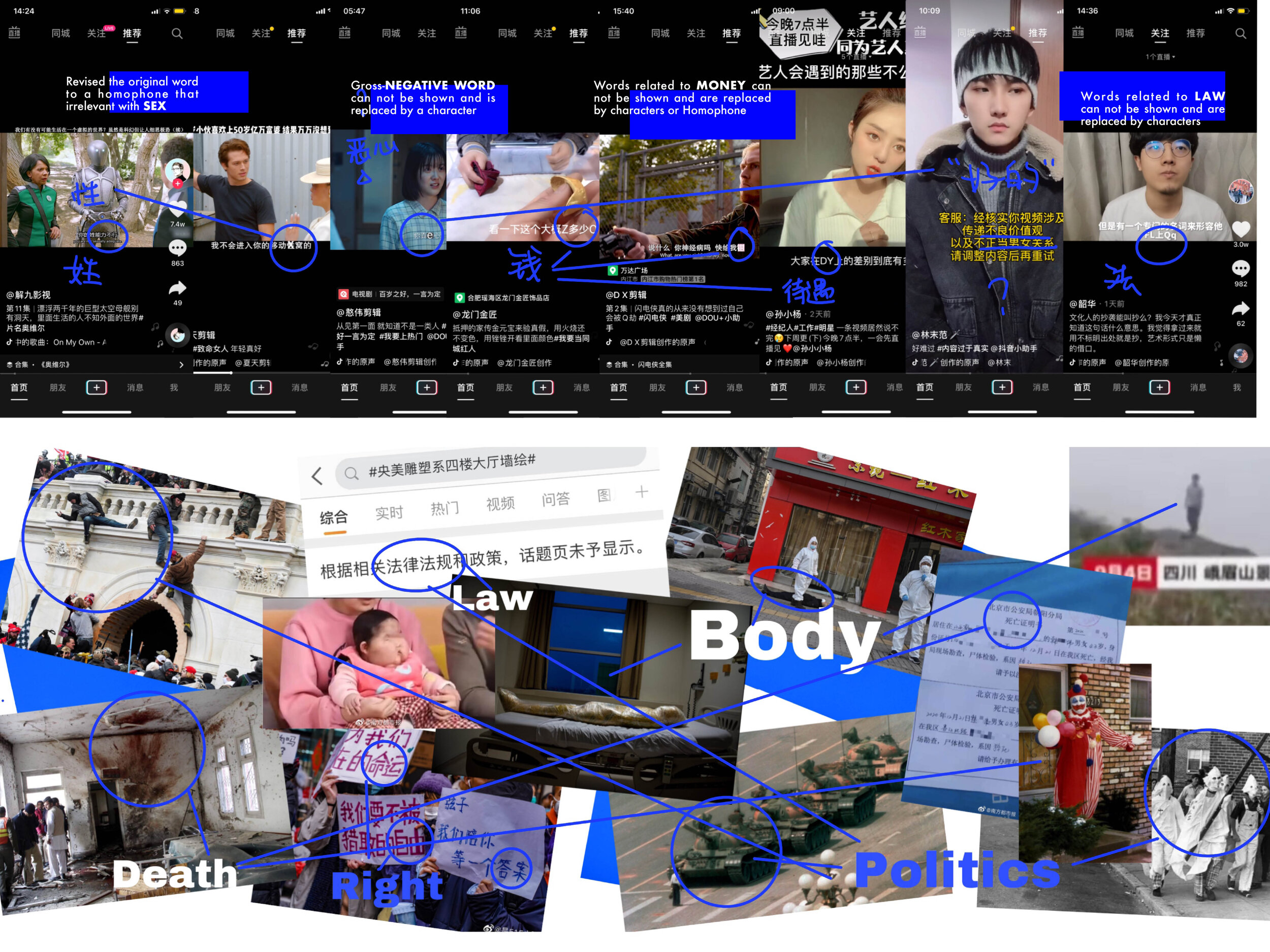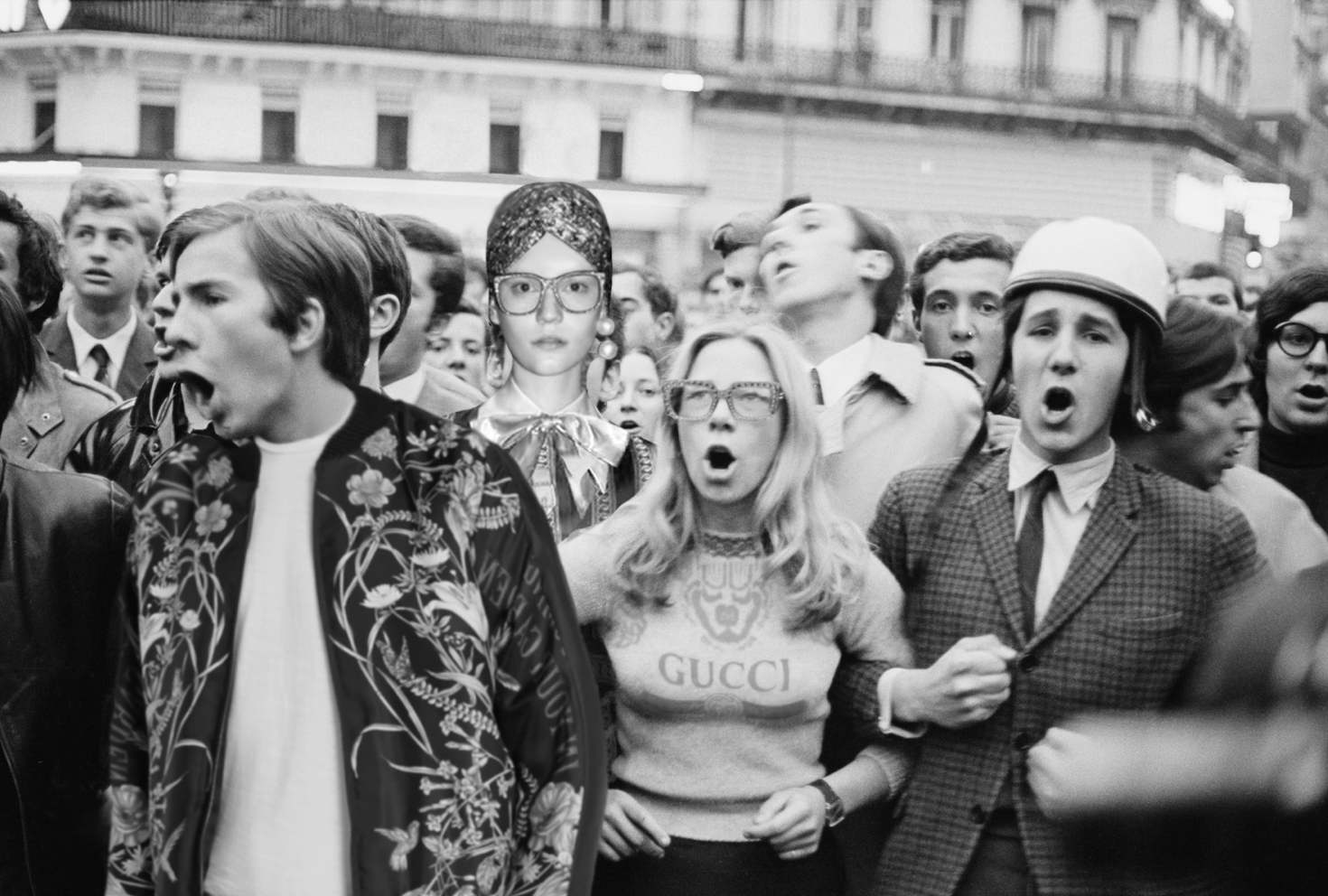
BLUR
Team Member: Yuehan Lin, Zepeng An.
Role: Research, Brainstorming, Sketching, Writing, Visual Design
Group Project, Spring 2021
Tools: Adobe Illustrator, JavaScript, html, CSS
Blur is a demonstration and a visualization of an existing online phenomenon, and my thinking process around its underlying social issues. In this project, I observed, explored, designed, and reproduced some online censorship behaviors that I encountered. Under censorship control, truths are partially hidden, stolen, and intentionally distorted. In this work, audiences are encouraged to switch between ambiguity and clarity--self-castrated information and original images. This project aims to bring up a conversation on topics of fragmented information, online environment, and censorship.
INSPIRATION
The whole project was inspired by what I have seen on TIKTOK (China version). I often see videos that specific words or items were mosaicked or directly captioned in a way that didn't match the video. After doing some research, I learned that these video bloggers took it upon themselves to caption their videos to ensure that their videos would not violate the rules and that they would not have their traffic restricted because they involved negative content. This “self-castration” action gives me the opportunity to think about this broad problem. The original purpose of making a video is to convey content either as fact or as an opinion. After covering up and weakening some existing facts, is what is presented still the original facts? Without knowing the whole picture, people receive fragmented information like a blind man feeling an elephant, so how can the real truth be conveyed?
This has led me to pay attention to the censorship of texts, language expressions, and education. Starting from the simplest and most fundamental source, I found an English-Chinese bilingual dictionary. As I went through the dictionary, I blacked out words and phrases that might be "blocked" or "disappeared" based on my own understanding and speculation from the basic educational tools. At the same time, I kept the original English text so that the meaning of the blacked-out words could still be conveyed in another way. In conducting a self-initiated, unofficial review of the dictionary, I found that I sometimes could not make an absolute judgment about a particular word or phrase. Whether or not to erase the word often depends on the context in which the word was used and my own slightly superficial understanding of the masking system. Sometimes I black out normal words if I associate them with words or phrases that might cause them to be blocked.
Such censorship is also common on social networks and is a well-known and agreed-upon "unspeakable". The most famous and common image on Sina Weibo is an image blocked under Sina Weibo censorship. The images that are blocked can be varied and unexpected. From real pornography, which should be banned according to law, to normal text, it is difficult for internet users to know the real blocking rules. Sina Weibo's blocking mechanism, in my opinion, can be described as preferring to kill 10,000 by mistake rather than letting one go. As a countermeasure, people first delete or hide content that might be blocked at the time of posting; later, creators consider the rules and regulations they might face when creating their posts. As a result, when creating something, it may have undergone a self-castration from the creators themselves to be released smoothly.
I also noticed that in many variety shows, there is some processing of the subtitles. In addition to replacing some words, I was most impressed by the use of quotation marks for “death”. For example, guests may say "I'm laughing to death", "I'm scared to death", etc., and the word "death" is always accompanied by quotation marks. As far as I can remember, this habit or requirement hasn’t emerged until recent years. Because I have seen too many deaths with quotation marks when I saw a joke once, my own mind came up with "laughing to death", the death in my mind also wore quotation marks. This was one of the things that drove me to do this project, motivated by the absurdity and fear of forced habits and Pavlov's dog-like education.
EXISTING ART WORKS
In his exhibition "Second History", artist Zhang Dali has collected multiple photographs of the same scene from a certain period in China. Some characters have been erased, and some backgrounds have been completely replaced. In this regard, Zhang Dali said, what we see and know now is actually "second history", and "first history" has been intentionally or unintentionally obscured.
Photographer Pavel Maria Smejkal's works often present what appear to be ordinary, common empty shots/landscapes. But in fact, they are images that have been processed, after the portraits of the original photographs have been removed. And these original photos are representative of famous and memorable events. In many cases, even after the removal of the subject, the viewer can still recall or associate the original photo with the background. This may also be considered as some kind of memory education.
May 2018 by Yasmine Anlan Huang is a series of collage art work from Gucci 18SS. Through which the artist challenges to Gucci's intentional or unintentional misuse of historical events to promote its brand features or merchandise.
“Honor” By NickelNike depicts the situation of that female's contribution and accomplishment are being erased and ignored by the society(especially during COVID-19). Even in authorized TVshows, female workers are sculpted as "not good as male" characters.
EYE TRACKING
Eye tracking is a process of measuring either the point of gaze (where one is looking) or the motion of an eye relative to the head. An eye tracker is a device for measuring eye positions and eye movement.
CONTROL YOUR SIGHT
After researching, I chose eye-tracking as part of the technique for my work. I think in a sense, censoring and pre-processing material is similar to controlling/blocking people's view. I wanted to simulate the censorship process through sight tracking and directional blurring. In this process, people's sight is monitored and the content being indoctrinated and educated is screened and processed. The truth may be close at hand, but it is being shown second-hand. Sight-monitoring can also bring a sense of powerlessness and fear of not being able to see the truth, just as we are confronted with receiving information in the real world with few ways to judge its truthfulness.
OUTPUT
I choose to make the output as a website, or what can be interpreted as a "window". It simulates the platform we normally receive information. And the message shown in my work would be exaggerated a little bit. The viewer navigates through this window and gets information, but the information (images and captions) is processed and blurred. When the eye falls on the image, the image appears blurred, accompanied by a broken, partial text description. When the eye leaves the image, the image becomes clear, but the information received will still be blurred because the viewer is looking at it with afterimages. The clear image is the truth that I hide in the window, while the blurred image and broken caption are my “self-castration” of my own source of information, to avoid censorship and try to help people discover the existence of the truth and the truth itself.











